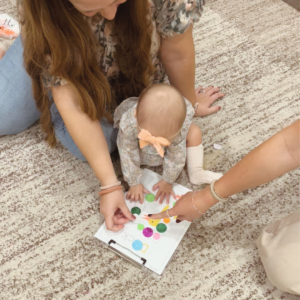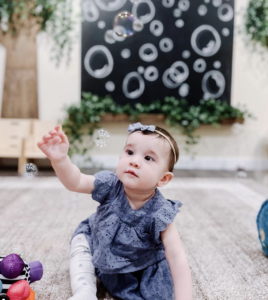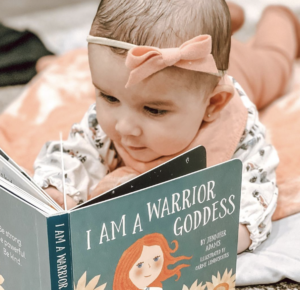Life is a multi-sensory experience. Each sense is special in its own way. We’ve all felt the soothing power of touch or experienced the way a scent can be a time machine, taking us back to a specific moment or memory.
Therefore, it’s no surprise that from the moment they enter the world, children seek out multi-sensory experiences! Think about when you’re speaking to your baby and they reach for your mouth. Or when you show them a new object and they immediately try to taste it. Children naturally use all their senses to explore, so when we implement sensory experiences into education, it enhances their development and learning.

There are many senses:
- Sight/visual
- Sound/auditory
- Touch/tactile
- Smell/olfactory
- Motion/vestibular
- Proprioception (sense of position & movement)
- Thermoception (temperature)
There are so many simple ways to get the senses involved during daily lessons! Below are a few examples, but you can get creative and create multi-sensory lessons of your own!
Play with colorful scarves as you read the book Babies Love Colors by Michelle Rhodes-Conway!
Allow your child to feel the soft fabric and throw the scarves up in the air, allowing your baby to watch as they float to the floor, boosting their visual tracking.
Match where you are with the stories you read!
Read a story about the ocean during bath time or a book about animals before going to the zoo!

Match motions with the words you say!
Whether you are reading a book to your baby or simply chatting with them about the day, motion is a wonderful way to teach the meaning of language. For example, if you’re talking about the stars in the sky, reach your baby’s hands into the air while saying the word “up.” Tap your ears when you chat about listening or eyes when you talk about something you saw. Matching words with motion will enhance your child’s ability to understand their meaning.
Spice up storytime!
Getting your sense of smell involved in storytime is a wonderful way to enhance the learning experience, especially for little ones who aren’t eating solid foods yet (you can introduce more taste lessons as they grow!). Try putting floral essential oils on a cotton ball to waft under your child’s nose as you read about flowers, lighting a pumpkin candle while reading That’s Not My Pumpkin by Fiona Watt, or getting some cinnamon stick companions for storytime on a cold winter night!
Feel the alphabet!
Make a letter out of foam or felt stickers so it is elevated from the page. As you talk about the letter and make its sound, allow your little one to feel the shape of the letter. This is a wonderful way to introduce letters to babies. You can even add this to tummy time, putting the letter in front of your little one on the floor. As they get older, they can begin touching the stickers and placing them on the paper themselves, helping to develop their fine motor skills and hand-eye coordination.
The list goes on and on!

Engaging multiple senses gets the neurons firing and stimulates greater neural connections, leading to deeper learning and retention. Multi-sensory learning also teaches our littlest learners that there are countless ways to interact with education. Everyone learns differently. Some of us are visual learners while others are tactile learners and like to get their hands dirty. We want to encourage exploration and find which methods of learning work best for each child. Implementing multi-sensory education is a wonderful way to raise children who are able to engage in learning in countless ways.
Getting to witness our Little Wonders discover and explore the world for the first time is a gift to us. Making their experiences as full and stimulating as possible is our gift to them!
